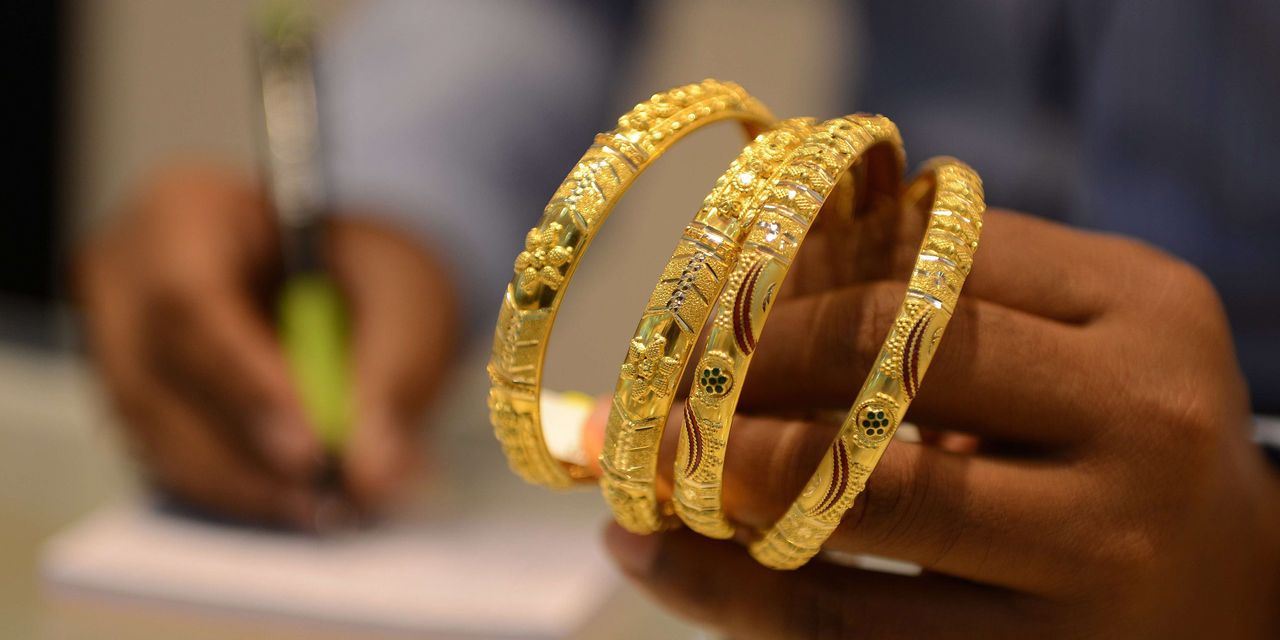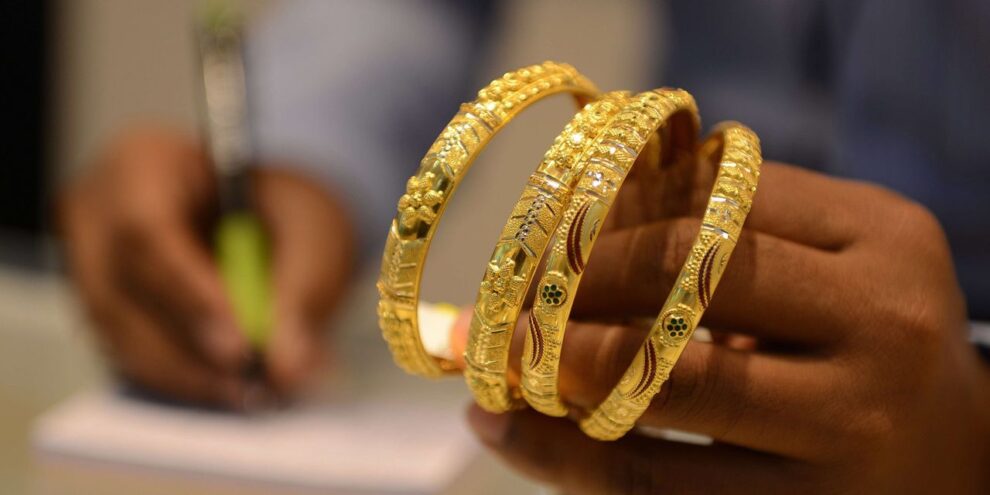
Gold futures finished lower Tuesday, reversing an earlier gain, to book a second straight decline, as stocks that took a beating on Monday were staging a rebound, highlighting some return in risk appetite on Wall Street after an omicron-sparked selloff.
Treasury yields also popped higher, creating a further headwind for bullion buying in the near-term.
Treasury yields were rising, with the 10-year Treasury note rate TMUBMUSD10Y, 1.485% at around 1.48% from 1.418% at 3 p.m. Eastern Time on Monday. Richer yields can undercut demand for precious metals that don’t offer a coupon.
February gold GCG22, -0.34% GC00, -0.34% traded $5.90, or 0.3%, lower to settle at $1,788.70 an ounce, following a 0.6% decline for the precious metal in the session before.
Meanwhile, the dollar was flat but holding in positive territory, as measured by the ICE U.S. Dollar Index DXY, -0.05%. The Dow Jones Industrial Average DJIA, +1.43%, the S&P 500 index SPX, +1.52% and the Nasdaq Composite Index COMP, +2.08% all had recouped losses from Monday’s downturn, and then some, in Tuesday afternoon action.
Many global markets, including those for precious metals, will be closed on Friday in observance of the Christmas holiday.
Light holiday trading was expected to create some anomalies in commodities dealings over the holiday-shortened stretch. Earlier in the session, bullish bullion investors appeared to be taking the opportunity to hedge further volatility in markets, with the yellow metal reaching an intraday peak at $1,801.70 an ounce until those gains evaporated.
“This week, we do not have any important economic event, but traders will find other external factors such as Omicron to drive the gold price action,” wrote Naeem Aslam, chief market analyst at AvaTrade, in a daily note. “Any risk-off event is likely to drive the gold price higher.”
March silver SIH22, +1.07%, meanwhile, rose 23.8 cents, or 1.1%, to end at $22.529 an ounce, following a 1.1% decline for gold’s sister metal on Monday.
On Monday, gold and silver sold off despite a broad-based selloff in equities, with the downturn attributed to growing concerns about the potential for the spread of the omicron variant of the COVID to harm the global economic rebound. It is an environment that should have delivered a boost to gold and silver but light liquidity might have forced some traders to sell gold investments, some analysts speculated.
Although negative headlines about the transmissibility of omicron persist, investors are taking on more risk and lightening assets considered havens, including bonds.
In other metals, March copper HGH22, +1.32% added 5.25 cents, or 1.2%, to settle at $4.3460 a pound, following a relatively flat finish a day ago. January platinum PLF22, +0.42% closed up $1.40, or 0.2%, to end at $927.80 an ounce, after a 0.9% decline on Monday; while March palladium PAH22, +2.64% traded $47.20, or 2.7%, to finish at $1,793.10 an ounce, after closing 2.1% in the prior session.






